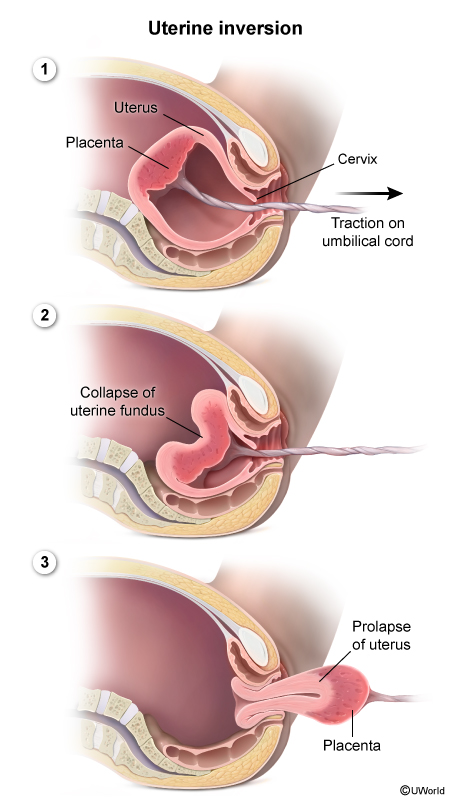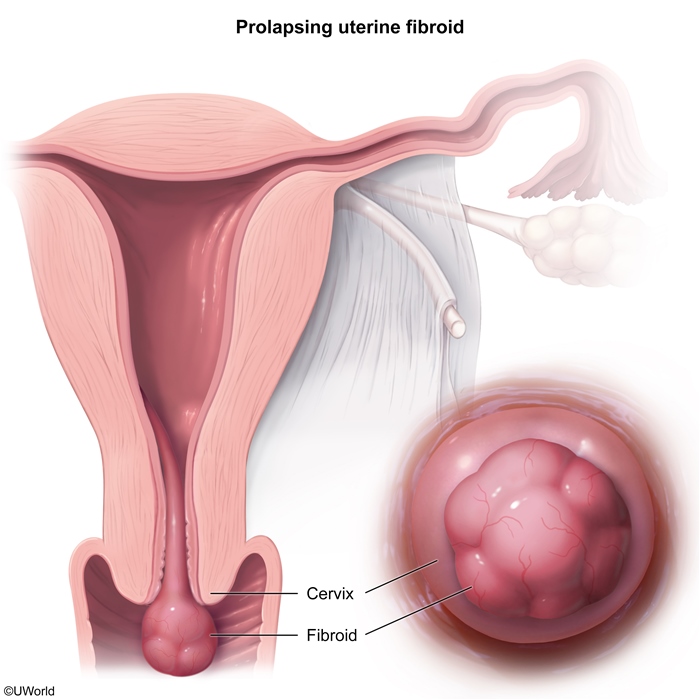Uterine Inversion
Article Sections
Introduction
Uterine inversion is a rare but life-threatening obstetric emergency occurring after delivery. It is characterized by the inversion (turning inside-out) and prolapse of the uterine fundus through the cervix (or, during cesarean delivery, through the uterine incision). It can lead to rapid-onset hypovolemic shock, hemorrhage, and maternal death if not promptly diagnosed and treated.
Pathophysiology and risk factors
Uterine inversion (Figure 1) typically occurs within minutes after fetal delivery. It is classically associated with excessive traction applied to the umbilical cord (eg, cord avulsion) and/or use of excessive fundal pressure during placental delivery (ie, third stage of labor). If these forces are applied before the placenta has finished separating from the uterine wall, the uterine fundus can collapse, turn inside-out, and prolapse through the cervix and into the vagina. Therefore, the most common risk factor is an abnormally adherent or retained placenta (eg, placenta accreta).
Continue Learning with UWorld
Get the full Uterine Inversion article plus rich visuals, real-world cases, and in-depth insights from medical experts, all available through the UWorld Medical Library.
Figures

